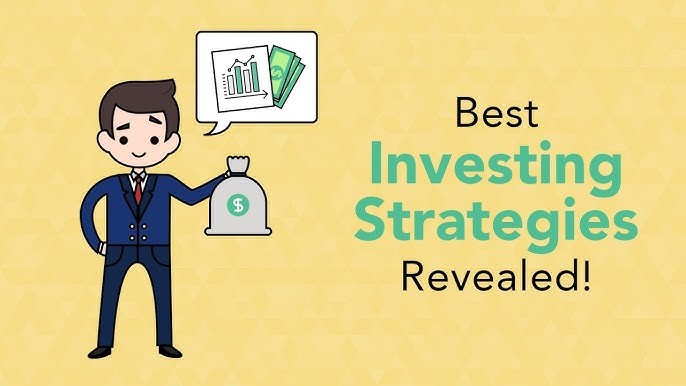- This article is essential reading for anyone navigating their financial journey.
- It emphasizes that success isn’t just about choosing investments like stocks or real estate but mastering the crucial skill of anticipating risks.
- Whether you’re making investment decisions, considering a career change, or even planning a relocation, understanding potential pitfalls is crucial.
- The article advocates asking, “What can go wrong?” before every significant financial decision to prepare for uncertainties effectively.
- It also highlights the importance of questioning popular opinions and seeking expert guidance to secure a stable financial future.
- If you aim for informed decisions and long-term financial security, this article is a must-read.
Success in your financial journey isn’t about choosing stocks, mutual funds, real estate, or gold—it’s about mastering the critical skill of anticipating risks. The real key to financial success lies in asking yourself, “What can go wrong?” before every significant decision. This isn’t just about investments; it applies to any financial move you make. Whether you’re planning an investment, considering a career change, or even relocating, understanding potential pitfalls is crucial.
Imagine you’re eyeing an investment opportunity. Before diving in, ask yourself: What if it doesn’t perform as expected? What are the financial repercussions? Do I have a backup plan? This proactive approach ensures you’re prepared for uncertainties and can navigate challenges effectively.
Financial decisions span a spectrum—from DIY investments to expert-guided strategies. Regardless of your approach, always pose the question: What are the risks? Whether you’re evaluating mutual funds, stocks, or real estate, thoughtful consideration of potential downsides is essential.
In essence, successful financial management isn’t about picking the right investment alone—it’s about anticipating and mitigating risks at every turn. Ready to make informed decisions? Start by asking, “What can go wrong?” and reach out for expert guidance to secure your financial future.
Check out our eye-opening video on bank fixed deposits (FDs), which has sparked a significant response. Many viewers initially reacted with disbelief, especially those who have staked their life savings solely in FDs. Our video presented hard-hitting facts and figures, prompting them to confront the reality. We’re not saying FDs are bad, but it’s crucial to ask: What are the risks of relying solely on FDs? What about reinvestment rates and taxation? Could I be overly exposed to one bank? What if regulatory actions impact my savings? Ignoring these questions can leave you vulnerable.
Moving beyond FDs, consider mutual funds in today’s DIY investment era. DIY investors scour Google and various sites for high-return funds, often favoring risky options like micro-cap or sector funds. While these can yield supernormal returns, they’re also prone to sharp downturns. What if market conditions turn against them? Understanding these risks is essential to avoid costly mistakes in your investment strategy.
People often stumble when they dive into real estate, committing to hefty EMIs and banking on perpetual property price hikes. The illusion of secure jobs and promising bonuses can shatter during recessions or corporate downturns, leaving plans in disarray. Asking “what can go wrong” before buying could unveil potential pitfalls and prompt considerations like contingency plans and financial cushions.
Similarly, choosing a school or college for your child demands foresight. Simply enrolling in a top-tier institution won’t guarantee success. Beyond education, career growth hinges on soft skills, networking, and adaptability. Overspending on education without assessing long-term outcomes can spell disaster. Always ponder potential challenges and prepare accordingly.
Relocating cities or countries follows the same principle. A lucrative salary abroad might seem appealing, but consider living costs and lifestyle adjustments. Understanding purchase power parity and evaluating whether a move aligns with your financial and personal goals can prevent unexpected setbacks. Asking “what can go wrong” ensures informed decisions and safeguards against unwelcome surprises.
If you aspire to succeed in life, the first skill you must hone is the ability to ask, “What can go wrong?” This simple yet profound question forces you to anticipate consequences, evaluate preparedness, and plan for contingencies—a crucial step towards achieving your goals.
Additionally, understanding what the crowd is saying can be pivotal in financial success. When society, media, or colleagues echo a unanimous sentiment—whether bullish optimism in the stock market or dire predictions of a downturn—heed caution. The consensus often reflects emotions rather than rational analysis. If everyone is predicting a market surge, it might indicate that the rally has already peaked, driven by excessive enthusiasm. Conversely, when doom and gloom pervade, it could signal an opportunity to contravene popular opinion for potential gains.
Consider the example of 2008, when stock markets plummeted from 21,000 to 8,000 points. Despite prevailing fears, bank fixed deposits (FDs) offered meager returns. Savvy investors who opted for bank shares instead enjoyed dividend yields of 9% to 12%, tax-free. This astute move capitalized on overlooked opportunities amidst widespread apprehension. Vijaya Bank, for instance, priced at just 22 rupees per share, yielded dividends that quickly escalated investments, illustrating the advantage of questioning prevailing wisdom and taking calculated risks.
In essence, questioning assumptions and critically analyzing popular sentiment can lead to insightful decisions that pave the way for financial success. Whether navigating turbulent markets or seizing overlooked opportunities, the ability to challenge the status quo is often the hallmark of those who thrive in dynamic environments.
Here’s a more engaging rewrite:
Another vital habit to cultivate in life is to refrain from seeking financial advice from friends and relatives. Often, the impulse to seek their opinion stems from a need for validation. But consider this: Are they truly accountable for their advice? If a decision based on their input goes awry, they won’t necessarily stand by you. Most of the time, they lack the specialized knowledge to provide sound financial guidance. They’re just part of the crowd, echoing popular sentiments.
Similarly, a key to financial success is embracing decision-making with a deliberate time delay. This isn’t about procrastination or indecision; rather, it’s about giving yourself space to evaluate options thoroughly. After all, decisions made in the heat of the moment, driven by fleeting emotions, often sideline rational judgment. By allowing emotions to settle over a few hours, days, or even weeks, you regain clarity. This ensures that when you finally commit, it’s based on sound reasoning rather than momentary impulses.
The advantage? When you delay decisions, you sidestep emotional biases that can cloud your judgment. Imagine meeting someone who impresses you with a tempting offer. If you jump in immediately, emotions might lead you astray. But by taking your time, those initial feelings subside, and you can assess the situation objectively. This approach dramatically increases the likelihood of making well-thought-out decisions that align with your long-term financial goals.
Join us in mastering finance! With three decades of global experience, NRI Money Clinic and team have empowered thousands of families worldwide. Whether you’re navigating financial challenges or aiming for growth, our experts are here to guide you. Don’t wait—reach out today and let’s build your secure financial future together! Click here to send us a WhatsApp message and connect with one of our financial experts. You can also get in touch with us through our website, LinkedIn, or Instagram.
To learn more about our business, take a look at this video. Curious about mastering financial success? Subscribe to our YouTube channel for more tips and tricks! Discover how finance can be as fun as it is crucial!











